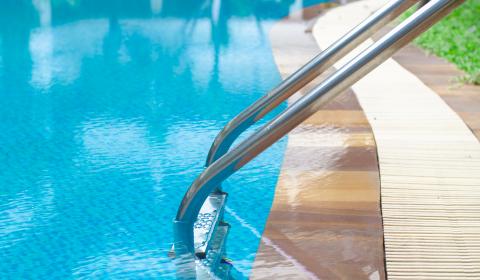
Pool Owners/Operators Beware: Pool Entrapment is a Serious Threat
Ah, summertime. The sun radiating off the pavement, the burgers sizzling on the grill, and the neighborhood pool beckoning to both kids and adults alike.
But if you happen to own or operate that public swimming pool, beware. There is danger lurking in the depths. Namely, the threat of pool entrapment. Pool entrapment occurs when a person’s
limb, hair, or body becomes caught in the strong suction in and around swimming pools or spa drains. And the statistics are alarming. According to the Consumer Products Safety Commission, there were 28 reports of injuries between 2009 and 2013. Most of the victims were children under 15 years old, and most of the entrapments occurred in public settings.
The Virginia Graeme Baker P&SS Act
Sometimes pool entrapment results in much worse than injury. In the summer of 2002, tragedy struck when a 7-year-old girl named Virginia Graeme Baker became trapped under water by a powerful hot tub drain. Her mother was unable to free her, and the two men who eventually did reported that they pulled so hard that the drain cover broke. Virginia died as a result of the incident, and her mother became an advocate for pool and spa safety, eventually lobbying Congress to require anti-entrapment drain covers and other safety devices. The Virginia Graeme Baker Pool & Spa Safety Act (P&SS Act) was signed into law by the President in 2007, became effective in 2008, and now serves as the minimum standard for pool and spa safety regulations in the United States. The P&SS Act applies to both residential and public pools, with public pools defined as:
- All pools and spas generally open to the public
- Pools open only to residents of apartment buildings, condominium complexes or multifamily residential areas
- Pools and spas open to guests of a hotel or resort
- Government pool facilities
How to Avoid Entrapment Issues
Anyone who owns or operates a public pool or spa -- or is looking to buy or lend for a property with a public pool or spa – must ensure compliance with the P&SS Act. Your 3rd Party Due Diligence Provider can check for compliance as part of an ASTM-based Property Condition Assessment. The Provider should verify the following:
1. Dual or multiple main drains are at least 3 feet apart
2. Drain covers meet the ANSI/ASME A112.19.8-2007 standard
3. A safety device is in place, such as: an automatic pump shut-off system, gravity drainage system, Safety Vacuum Release System (SVRS), suction-limiting vent system, or drain disablement system
To avoid the serious threat of pool entrapment at your property this summer, make sure your pool or spa is in compliance with the P&SS Act. Keep your patrons safe by scheduling routine inspections or having your 3rd Party Due Diligence Provider conduct a pool inspection as a part of a Property Condition Assessment.
For more information, contact Greg Bailey, Director of A&E Technical Operations.